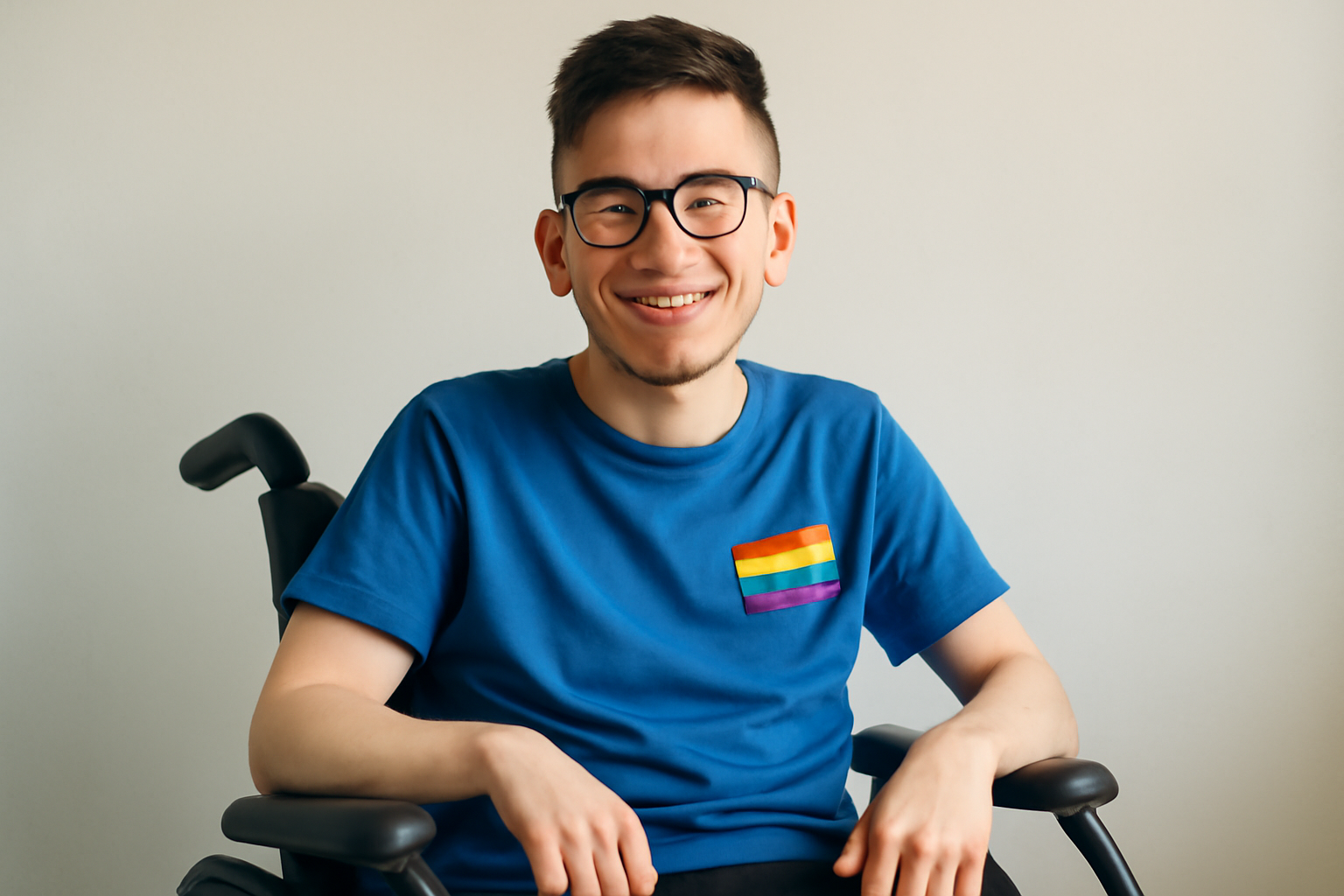
Introduction
A young transgender man with cerebral palsy has recently become a prominent voice against online intolerance after facing unwarranted attacks on social media. Micah Leroy, a 19-year-old college student from the University of Minnesota, found himself at the center of controversy after sharing a personal milestone on social media. Despite the challenges he faces, Leroy is determined to advocate for the rights of disabled and transgender individuals.
The Power of Visibility
Micah Leroy, who has been living openly as a transgender man since the age of 14, decided to share a significant personal achievement with his followers: the results of his top surgery, a critical gender-affirming procedure for many trans-masculine individuals. This decision, which should have been celebrated, instead attracted a wave of hostility online.
Leroy, who lives with cerebral palsy, uses his online platforms to educate and inspire others. Cerebral palsy is a condition affecting movement and coordination, and while it can involve intellectual disabilities, many individuals like Leroy have no cognitive impairments. Despite his ability to communicate effectively through writing and a speech-generating device, and even using his own voice among those familiar with him, he was targeted by anti-trans campaigners who attempted to undermine his autonomy.
A Surge of Online Backlash
Following his post, notable figures known for their anti-trans rhetoric misrepresented Leroy, questioning his capacity to make medical decisions and even misgendering him. The situation escalated when Marjorie Taylor Greene, a Republican congresswoman with a history of inflammatory comments, questioned the legitimacy of Leroy's medical care on social media, further fuelling the backlash.
The online environment became increasingly hostile, with Leroy's social media accounts on platforms like Facebook and Instagram being reported and subsequently taken down under false allegations of inappropriate content. Despite his appeals, these bans remained in place, adding another layer of frustration to his battle for visibility and recognition.
A Voice of Resilience
Leroy, however, refuses to be silenced. In a video statement, he asserted his independence as his own legal guardian and emphasized his right to share his experiences as both a disabled individual and a transgender man. "I want people to know that it is possible to be disabled and trans," he declared, underscoring his commitment to advocacy.
He aims to channel his experiences into effective advocacy, hoping to influence state and federal legislature to better protect disabled and transgender rights. "With all the hate this has stirred up, I believe any publicity is good publicity in furthering my goals," Leroy stated. This experience has reinforced his determination to address the discrimination that stems from misconceptions about disability and gender identity.
Support from the Community
Leroy's story has resonated with many, including other advocates like Leo Aces, a fellow trans man with cerebral palsy and a prominent disability awareness speaker. Aces condemned the "toxic transphobia and ableism" directed at Leroy, reflecting on his own experiences as an activist. He pointed out that the current social climate, exacerbated by changes in social media policies and political tensions, has created a "toxic storm" of discrimination.
Aces views Leroy's story as a catalyst for broader discussions about the intersection of physical disabilities and gender identity. "The visibility of physical disability and gender identity can attract controversy because of the systemic notion that disabled people have less agency," he remarked. This notion, he argues, must be challenged to advance both the visibility and rights of disabled and transgender individuals.
Conclusion
Micah Leroy’s courage in the face of adversity shines as a beacon of hope and resilience. His story not only highlights the challenges faced by individuals at the intersection of disability and gender identity, but also serves as a powerful reminder of the importance of advocacy and education. By sharing his journey, Leroy not only empowers himself but also inspires others to stand up against intolerance and fight for a more inclusive society.
Join the conversation and share your thoughts in the comments below, remembering to keep it respectful and supportive.
Related Posts
Triumphant Trans Woman Wins Legal Battle and Inspires Others to Stand Up for Their Rights
Breaking new ground: a landmark victory in transgender rights After battling in courtrooms and enduring endless challenges, Diana Portillo, a transgender woman, has secured a monumental victory in her decade-long fight against workplace discrimination. The result? Nearly $1 million awarded in a historic settlement. But this isn't just a win on paper—it represents a powerful precedent in combati [...]
Pride Month in Latin America: Protests and Demands for Equality
**Celebrating Pride and advocating LGBTQ+ rights in Latin America** Pride Month in Latin America was a lively mix where celebration met activism. Communities united, not just throwing a party but making a stand—demanding equality and pushing governments toward better protection and rights recognition. Throughout Latin America, pride events erupted in marches and cultural displays, each with a c [...]
Transgender Erasure Actions Implemented by National Park Service
```html Trump administration's impact on national park service and transgender recognition The Trump administration made notable moves in undermining transgender representation, which included directing agencies like National Park Service not include "T" and "Q" when they refered “LGBTQ” in any official communication. This move seems part a broader plan by this administration aimed at reducin [...]